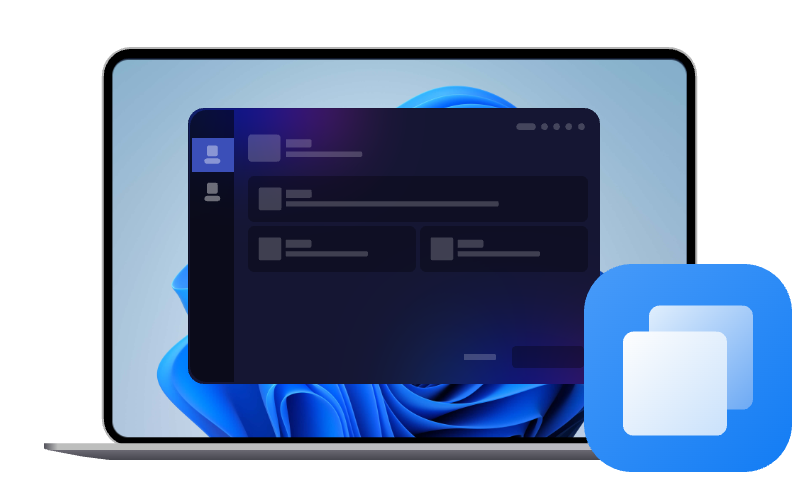Alert TPM Device Is Not Detected on Dell: Fixed Now!
Seeing the error “Alert! TPM device is not detected” on your Dell computer? This guide explains why it happens and how to fix it with 5 effective ways.
What causes Dell alert TPM not detected?
The “Alert! TPM device is not detected” message on a Dell PC typically appears during boot-up and signals that the system cannot find or initialize the Trusted Platform Module (TPM). This error can stem from a variety of hardware or firmware-related issues. Below are the most common causes:
- TPM not present or physically faulty
- Outdated or corrupted BIOS firmware
- TPM disabled in BIOS/UEFI settings
- Outdated TPM driver
- TPM stuck in a bad state
How to fix alert TPM device is not detected on Dell Inspiron/Latitude
If you get stuck on alert TPM device is not detected on Dell Windows 10/11, please refer to the following methods to get it fixed.
Fix 1: Physical Inspection
On Dell systems where the TPM module is discrete and not embedded, there is a possibility that the TPM chip is missing, loose, or damaged. Follow these steps to check it:
1. Power down and unplug your PC. Then open your computer case safely.
2. Locate the TPM module.
- On desktops, the TPM is often installed in a small dedicated socket on the motherboard, labeled "TPM" or "SPI_TPM".
- On laptops, the TPM is usually integrated, but older or enterprise-grade models may have a separate module.
3. Ensure the module is properly seated in its socket. Look for signs of corrosion, burnt components, or dislodged connectors.
4. Reseat or replace if necessary.
- Gently remove and reinsert the module if it appears loose.
- If missing or damaged, contact Dell support to check compatibility and request a replacement if available.
5. Put everything back together, power on your PC, and check if the TPM is now detected in BIOS or Windows.
Fix 2: Update BIOS/UEFI
An outdated or corrupted BIOS/UEFI firmware could cause the TPM device is not detected on your Dell system. Learn how to safely update the BIOS on Dell PCs below:
1. Identify Your Current BIOS Version
- Press Windows + R, type msinfo32, and hit Enter.
- Look for BIOS Version/Date in the System Information window.
2. Download the Correct BIOS Update
- Visit the official Dell Support website. Enter your Service Tag or choose your product model manually.
- Navigate to the Drivers & Downloads section, then select BIOS under Category.
- Ensure the BIOS version is newer than your current one. Download the .exe BIOS update file to your desktop.
3. Plug in your device (for laptops). Close all applications and temporarily disable antivirus software.
4. Double-click the downloaded file and follow the on-screen prompts. The system will reboot and automatically apply the update.
5. After the update, enter BIOS/UEFI (press F2 on boot). Navigate to Security > TPM and confirm that the module is now visible and enabled.
Fix 3: Enable TPM in BIOS/UEFI
The TPM module may be disabled in BIOS/UEFI after a BIOS reset, system update, or motherboard replacement. Fortunately, enabling it is a straightforward process.
1. Restart your PC and press F2 repeatedly at the Dell logo screen to enter BIOS/UEFI setup.
2. In BIOS, look for a category like Security, Trusted Computing, or Intel PTT (for systems using Platform Trust Technology instead of discrete TPM).
3. Ensure TPM or Security Device Support is enabled. On some systems, you may see TPM 2.0, TPM On, or Enable PTT.
4. Press F10 to save changes and exit. Your system will reboot. Check if the TPM is now detected by Windows (open tpm.msc from the Run dialog).
Tip: On some newer Dell systems, enabling Intel PTT under “Firmware TPM” has the same effect as enabling a physical TPM.
Fix 4: Update TPM Driver
If your TPM is enabled in BIOS but still not recognized by Windows, the issue could lie with a corrupted or outdated driver. Follow the steps below to update the TPM driver in Windows:
1. Press Windows + X, then choose Device Manager from the list.
2. Expand the Security Devices section. You should see something like Trusted Platform Module 2.0.
3. Right-click the TPM entry and select Update driver.
4. Choose Search automatically for drivers. Windows will search online and install any available updates.
Tips:
●If updating doesn't work, try uninstalling: right-click the TPM device and choose Uninstall device. Restart your PC to let Windows reinstall the default TPM driver automatically.
●If your Dell system uses Intel PTT, updating the chipset driver from Dell’s official website may also resolve TPM detection issues.
Fix 5: Clear TPM
If your Dell system recognizes the TPM but it’s still not functioning properly—or you’re stuck in a persistent “TPM not detected” loop—clearing the TPM might help.
🔔Warning: Clearing the TPM will delete all TPM-stored keys, which may render encrypted data (such as BitLocker-protected drives) inaccessible. Be sure to back up your recovery keys and decrypt any drives before proceeding.
1. Press Windows + R, type tpm.msc, and press Enter.
2. In the right-hand Actions pane, click Clear TPM. You’ll be prompted to restart your computer.
3. During reboot, your system will ask you to confirm TPM clearing. Press the appropriate key (usually F12, Y, or as indicated onscreen).
4. Once the system restarts, TPM will be re-initialized. You can re-enable BitLocker or other TPM-based features after verifying the module is now properly detected.
Bonus: Copy Windows hard drive for quick recovery
While troubleshooting TPM issues or updating BIOS, there's always a small risk of system instability or boot failure. That’s why creating a full copy of your Windows hard drive is a smart move. It gives you a complete recovery point in case anything goes wrong.
The best disk clone software - AOMEI Cloner is recommended for a reliable, user-friendly solution. It’s a powerful disk cloning software that supports all Windows PC and Server versions.

- OS Migration: Transfer your OS to a new SSD or HDD without reinstalling Windows.
- Disk Upgrade or Replacement: Clone entire disk to upgrade or replace an old or failing hard drive.
- Bootable Media Creation: Clone hard drive with a bootable USB, avoiding system interference and making the process more efficient.
- Wide Compatibility: Support various computer brands (Dell, HP, ASUS, etc.), disk types (HDD, SDD, SSHD, etc.), disk interfaces (SATA, NVMe, etc.).
Download AOMEI Cloner now to try it out! To copy your Windows hard drive to another drive, just click Clone > Disk Clone and follow the on-screen instructions.
Summary
Hope you have fixed alert TPM device is not detected on Dell Inspiron/Latitude with one of the methods provided above. To ensure system safety during troubleshooting, we also recommend cloning your Windows hard drive with AOMEI Cloner for quick recovery. Whether you're a casual user or IT admin, this article helps you resolve TPM issues confidently and restore full system functionality on your Dell device.

